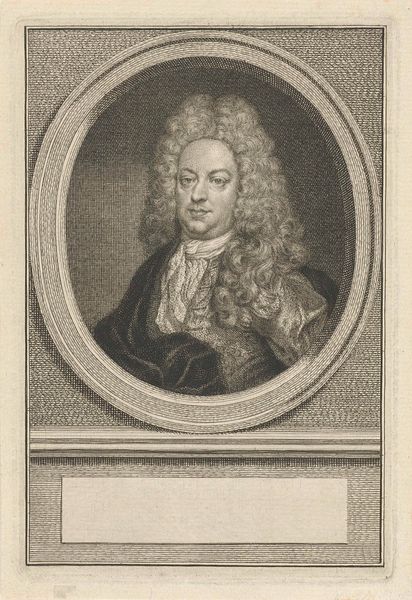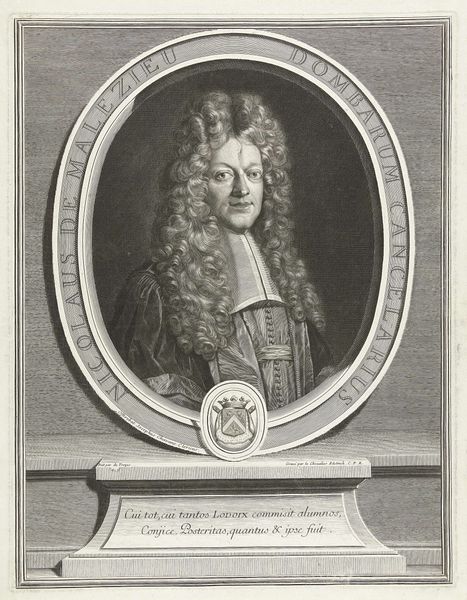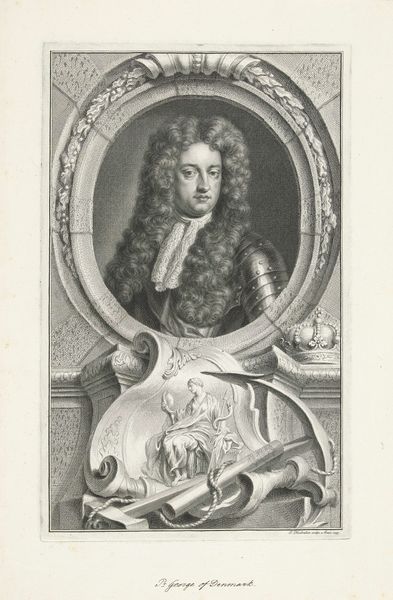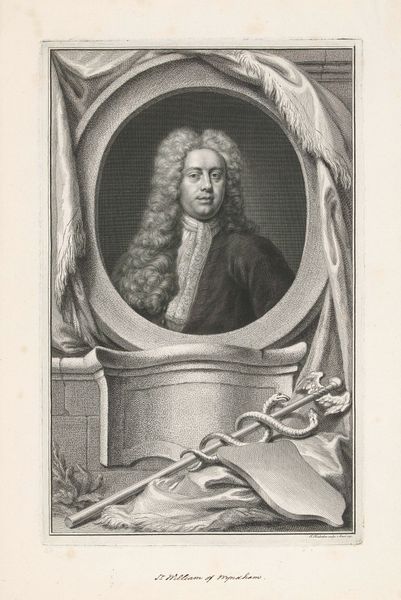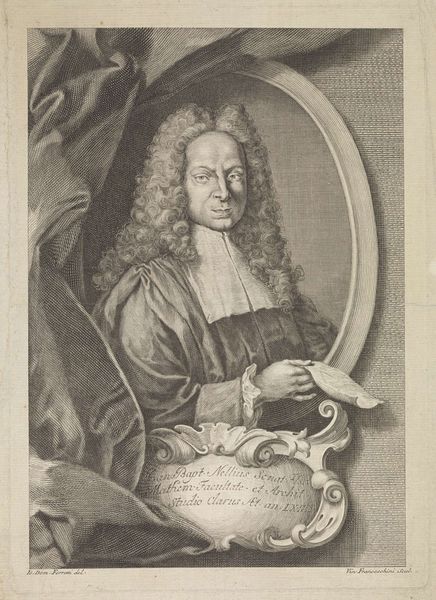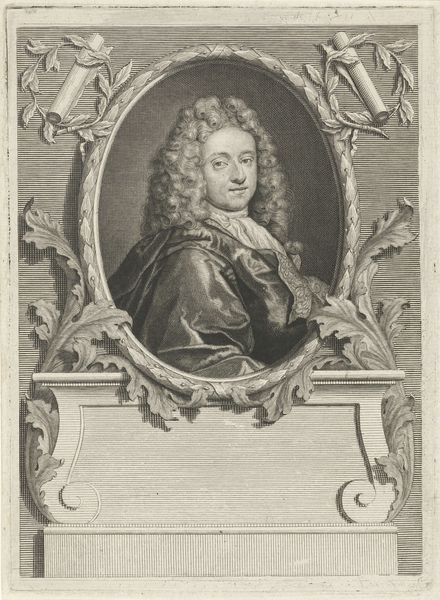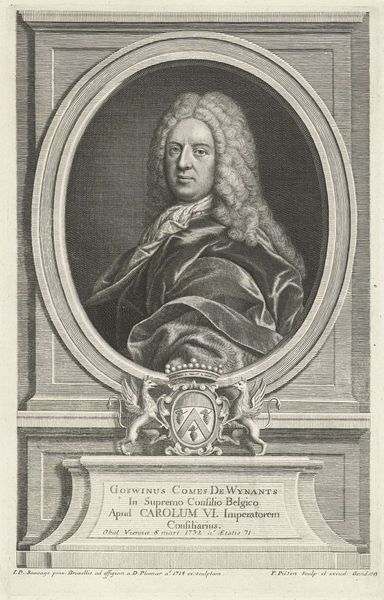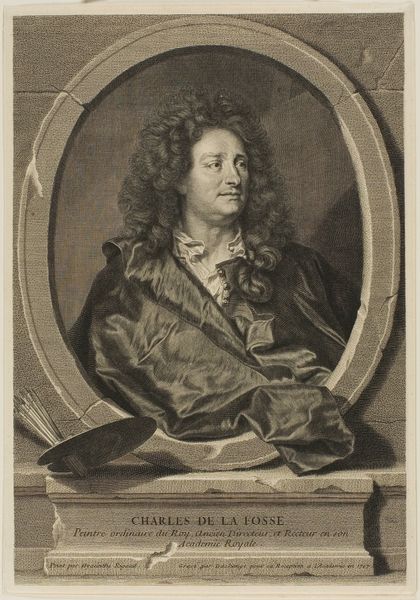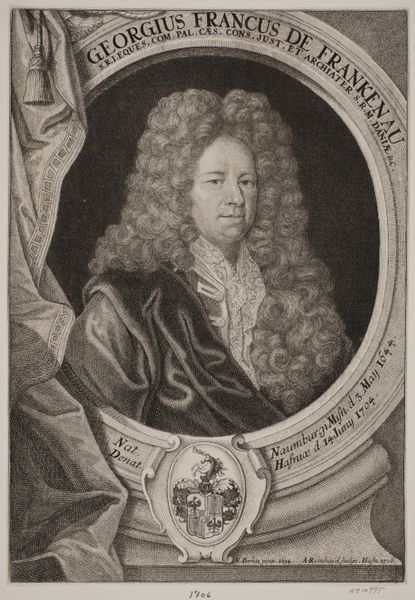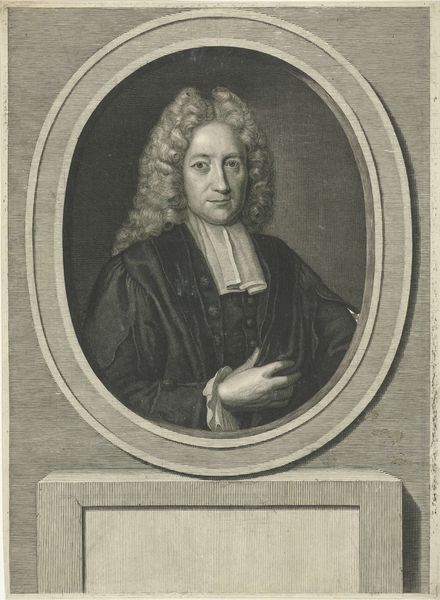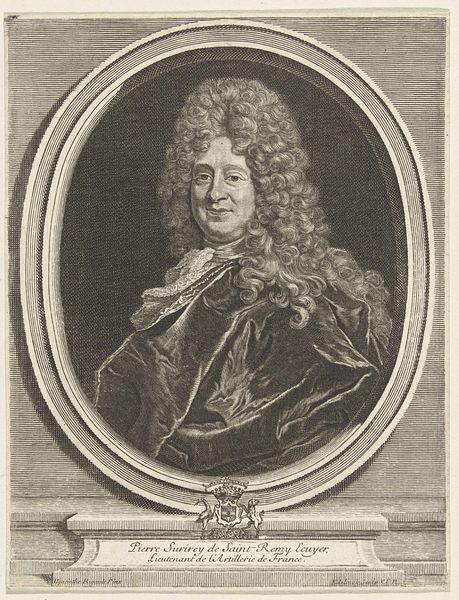
drawing, print, metal, engraving
#
portrait
#
drawing
#
baroque
# print
#
metal
#
italian-renaissance
#
engraving
Dimensions: height 405 mm, width 280 mm
Copyright: Rijks Museum: Open Domain
Pieter van Gunst created this portrait of Joachim Hoppe using engraving techniques. Note the elaborate wig, a dominant symbol of status and power. It’s a fascinating echo of earlier symbols of authority. Consider the lion's mane in ancient art, symbolizing strength and royalty. This motif appears throughout history, from the headdresses of Egyptian pharaohs to the elaborate hairstyles of Roman emperors. Now, observe how the wig in Hoppe’s portrait serves a similar function, denoting prestige and social standing in the 17th and 18th centuries. The wig is not merely a fashion statement. It represents a carefully constructed identity, a mask donned to project authority. In a sense, the collective desire to be seen as powerful and influential has driven this recurring motif. The wig, like the lion's mane before it, taps into our subconscious understanding of power, resurfacing throughout history in various forms, each adapted to its cultural context, yet fundamentally unchanged in its symbolic weight.
Comments
No comments
Be the first to comment and join the conversation on the ultimate creative platform.
